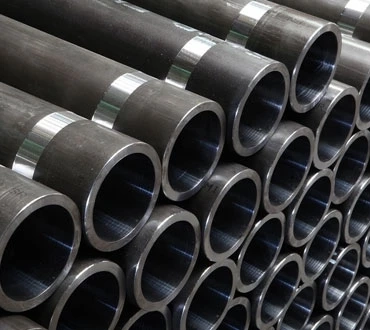High-strength, low-carbon steel with good machinability, weldability, and ductility is known as AISI-1020 steel. It is frequently shaped into structural tubing that is circular and used to create items like axles, spindles, camshafts, and light-duty gears. Typically, this type of steel is cold drawn, turned, and polished. Due to its low carbon concentration, it is not susceptible to induction or flame hardening. However, it can undergo carbon nitriding or case hardening without affecting its core strength.
AISI 1020 steel tube has a low tensile strength but reasonably high weldability and machinability due to its low carbon content. For AISI-1020 steel, the minimum tensile strength is 60,900 pounds per square inch (psi). It must have minimum yield strength of 50,800 psi. And 36.5% of its elongation at break. Both cold drawing and heat treatment are options for AISI-1020 tubing. The chemical composition and physical characteristics of AISI-1020 steel are the same for both cold-drawn and heat-treated forms.
However, the various processing techniques result in various mechanical characteristics. For instance, compared to heat-treated steel, AISI 1020 steel tube has slightly higher hardness, greater tensile strength, and better fatigue strength. In contrast, AISI-1020 tubing that has undergone heat treatment has a larger area reduction during elongation. Furthermore, tempered and quenched AISI-1020 steel is an option.
Chemical Composition of AISI 1020 Steel Tubes
AISI-1020 steel tubing is made up chemically of carbon, iron, manganese, phosphorus, and sulfur. In many ways, AISI-1020 and AISI-1018 are comparable, and their alloy compositions are almost identical. The two grades of steel could have different other characteristics.
The percentages of malleability and ductility decrease as more carbon are added to a steel alloy. Low-carbon steel is simpler to deal with while high-carbon steel is stronger and harder. A low-carbon steel grade is AISI-1020 steel tubing. It contains between 0.18% to 0.23% carbon. In contrast, high-carbon steels range from 0.6% to 1% in carbon content. AISI-1020 tubing is simple to form and work with because it is low-carbon steel.
Applications of 1020 Steel Tubing
Machine manufacture is where AISI-1020 steel tubes are primarily used. Additionally, axles, machine components, spindles, and light-duty gears can be made from this grade of tubing. It is among the most well-liked and useful grades of steel tubing.



